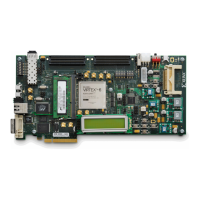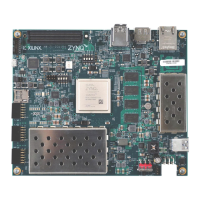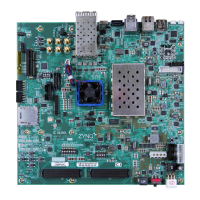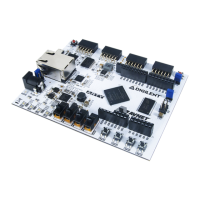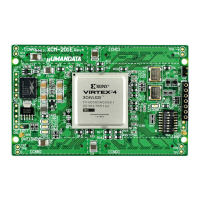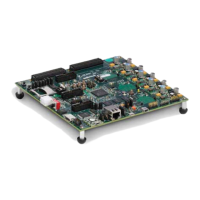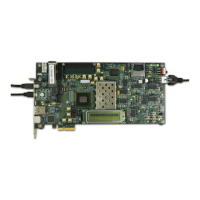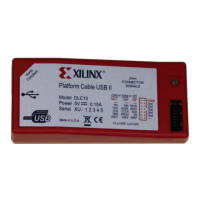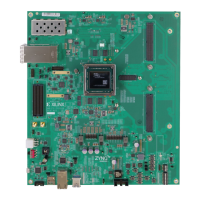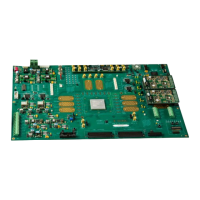20 www.xilinx.com ML505/ML506/ML507 Evaluation Platform
UG347 (v3.1.1) October 7, 2009
Chapter 1: ML505/ML506/ML507 Evaluation Platform
R
FPGA. The programmable clock generator provides the following factory default single-
ended outputs:
• 25 MHz to the Ethernet PHY (U16)
• 14 MHz to the audio codec (U22)
• 27 MHz to the USB Controller (U23)
• 33 MHz to the Xilinx System ACE CF (U2)
• 33 MHz, 27 MHz, and a differential 200 MHz clock to the Xilinx FPGA
If users change the factory default configuration of the clock generator chip, the related
reference design material might not work as designed. Instructions for returning the
IDT5V9885 to the factory default configuration are provided in Appendix B,
“Programming the IDT Clock Chip.”
5. LCD Brightness and Contrast Adjustment
Turning potentiometer R87 adjusts the image contrast of the character LCD. The
potentiometer should be turned with a screwdriver.
6. GPIO DIP Switches (Active-High)
Eight general-purpose (active-High) DIP switches are connected to the user I/O pins of the
FPGA. Table 1-5 summarizes these connections.
Table 1-4: Oscillator Socket Connections
Reference
Designator
Clock Name FPGA Pin Description
X1 USER_CLK AH15 100 MHz single-ended
U8 CLK_33MHZ_FPGA AH17 33 MHz single-ended
U8 CLK_27MHZ_FPGA AG18 27 MHz single-ended
U8 CLK_FPGA_P L19 200 MHz differential pair (pos)
U8 CLK_FPGA_N K19 200 MHz differential pair (neg)
Table 1-5: DIP Switch Connections (SW4)
SW4 FPGA Pin
GPIO_DIP_SW1 U25
GPIO_DIP_SW2 AG27
GPIO_DIP_SW3 AF25
GPIO_DIP_SW4 AF26
GPIO_DIP_SW5 AE27
GPIO_DIP_SW6 AE26
GPIO_DIP_SW7 AC25
GPIO_DIP_SW8 AC24
Downloaded from Elcodis.com electronic components distributor
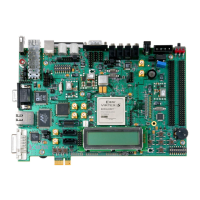
